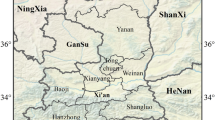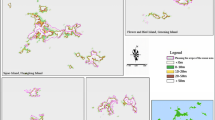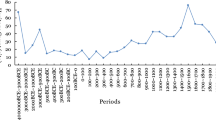Abstract
Historical preservation is becoming ever important in globalizing Shanghai city. However, traditional survey-based ways of policy making are not efficient. This work introduces the data-driven technique with machine learning algorithm to find the relationship between the features of the historical sites and the popularity, which relates to the economy such as tourism and the associated GDP contribution. The method is automatic, which relieves the work load from statistical surveys and other inefficient traditional approaches. Moreover, while the surveys can only reflect the current conditions, the machine learning approach has the ability of predicting the possible outcomes based on existing data, which is helpful when decisions on protection and development are to be made. We collect data from selected historical sites in Shanghai to illustrate the procedure of the proposed data-driven approach. The case study demonstrates the capability of prediction and shows its promising future in guiding policy making, resource allocation and scientific research.





Similar content being viewed by others
References
Zhang S (2006) Conservation strategy of urban heritage in Shanghai. City Plan Rev 30(2):49–54
Zhang Y (2007) Between cultural and economic value: the conservation and adaptive re-use of Shanghai cultural built heritage. China Electrics Publishing Press, Beijing
Ren X (2008) Forward to the past: historical preservation in globalizing Shanghai. City Commun 7(1):23–43
Hale RD (1978) Economic aspects of historic preservation. J Cult Econ 2(2):43–52
Hutter M, Rizzo I (1997) Economic perspectives on cultural heritage. Palgrave Macmillan, Basingstoke
Ligibel TJ, Tyler N, Tyler IR (2009) Historic preservation: an introduction to its history, principles, and practice. W.W.Norton and Company, New York
Listokin B, Listokin D, Lahr M (2010) The contributions of historic preservation to housing and economic development. Hous Policy Debate 9(3):431–478
Cheong C, Rypkema D, Mason R (2011) Measuring economic impacts of historic preservation. Technical report, PlaceEconomics, University of Pennsylvania
Batty M (2013) Big data, smart cities and city planning. Dialog Hum Geogr 3(3):274–279
Kitchin R (2014) The real-time city? Big data and smart urbanism. GeoJournal 79(1):1–14
Luca M, Glaeser EL, Kominers SD, Naik N (2016) Big data and big cities: the promises and limitations of improved measures of urban life. Econ Inquiry 56:114–137
Paul A, Rathore MM, Ahmad A, Rho S (2016) Urban planning and building smart cities based on the internet of things using big data analytics. Comput Netw 101:63–80
Murphy KP (2012) Machine learning: a probabilistic perspective. The MIT Press, Cambridge
Alpaydin E (2014) Introduction to machine learning, 3rd edn. The MIT Press, Cambridge
Hall MA, Witten IH, Frank E, Pal CJ (2016) Machine learning: an artificial intelligence approach. Morgan Kaufmann, Burlington
Lippmann R (1987) An introduction to computing with neural nets. IEEE ASSP Mag 4(2):4–22
Hu MY, Zhang G, Patuwo BE (1998) Forecasting with artificial neural networks: the state of the art. Int J Forecast 14(1):35–62
Suykens J, Vandewalle J (1999) Least squares support vector machine classifiers. Neural Process Lett 9(3):293–300
Scholkopf B, Smola AJ (2001) Learning with kernels: support vector machines, regularization, optimization, and beyond. The MIT Press, Cambridge
Safavian SR, Landgrebe D (1991) A survey of decision tree classifier methodology. IEEE Trans Syst 21(3):660–674
Sun B, Ermagun A, Dan B (2017) Built environmental impacts on commuting mode choice and distance: evidence from Shanghai. Transp Res Part D 52:441–453
Xiang Y, Zhang S (2013) Process and evaluation of the preservation and restoration of Yu garden in Shanghai. Urb Archit 5:44–47
Author information
Authors and Affiliations
Corresponding author
Ethics declarations
Conflict of interest
The authors declared no conflicts of interest to this work.
Rights and permissions
About this article
Cite this article
Wei, Z., Tong, Q. Data-driven historical preservation: a case study in Shanghai. Neural Comput & Applic 32, 3423–3430 (2020). https://doi.org/10.1007/s00521-018-3710-z
Received:
Accepted:
Published:
Issue Date:
DOI: https://doi.org/10.1007/s00521-018-3710-z




